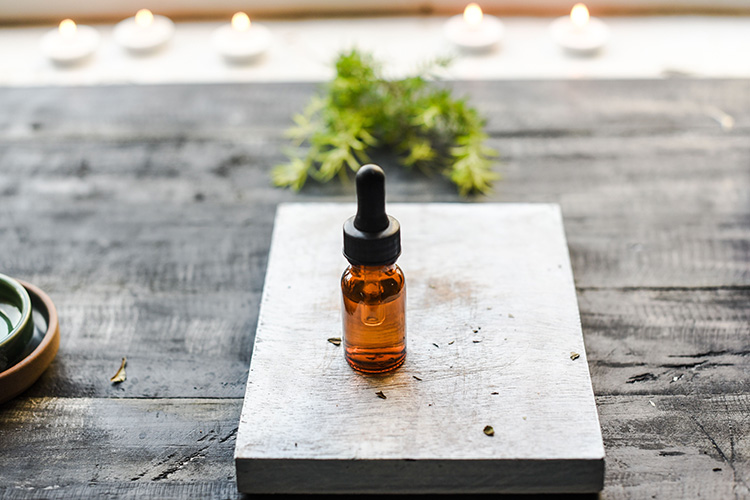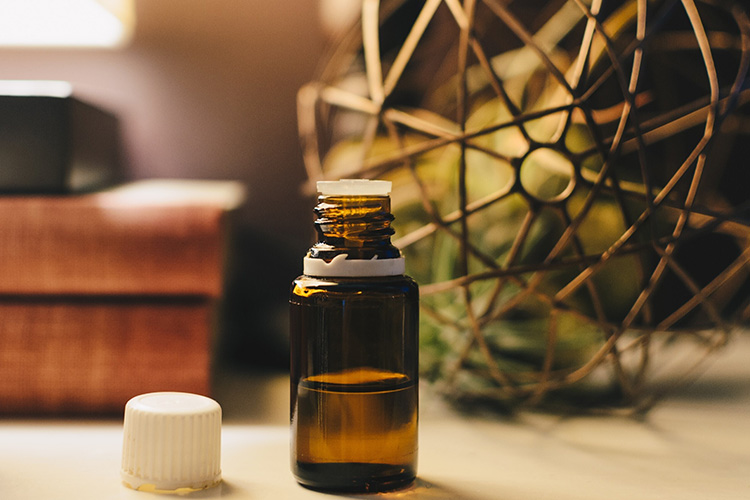If you’ve ever studied a bottle of cannabis tincture, you may have noticed the words “MCT oil” on the label. But…what is MCT oil? While not a cannabis product itself, it’s a healthful and neutral-tasting oil that not only serves as a delivery system for cannabinoids such as THC and CBD, but may impart health benefits of its own.
If you’re interested in giving your wellness a boost with all-natural products, you’ll want to know how to use MCT oil. And in today’s post, we’ll share everything we know, including:
- What is MCT oil?
- What are the types of MCT oil?
- How our bodies metabolize MCT oil
- How to take MCT oil for maximum health benefits
Are you ready? Let’s begin.
What Is MCT Oil?
What’s in a name? “MCT” is short for ”medium-chain triglycerides.” In simple terms, it’s a type of fat that has some very intriguing properties when it comes to our health and wellness.
If you’re wary of the word “fat,” it’s important to note that dietary fats are an essential part of our nutritional intake. And because medium-chain triglyceride molecules are smaller than the long-chain triglycerides (LCT) that constitute most of the dietary fats we consume, they’re easier to digest. This means that they more readily enter the bloodstream, where they become a quick and healthful source of energy.
The best MCT oil typically comes from coconut or palm kernels. Separated from these nuts by a process called fractionation, pure MCT is either used on its own or blended with a proportion of LCT for specific uses.
How much smaller are MCTs than LCTs? It comes down to a question of atoms. While LCTs contain between 13 and 21 carbon atoms, MCTs contain between 6 and 12. The exact number of carbon atoms determines how different types of MCTs are defined and named:
- C6: Caproic or “hexanoic” acid
- C8: Caprylic or “octanoic” acid
- C10: Capric or “decanoic” acid
- C12: Lauric or “dodecanoic” acid
While there’s some debate as to whether C12 / lauric acid is actually an MCT, in practice, most MCT oils consist of C8 and C10 acids. While C6 oil presents some dietary benefits due to its digestibility, there’s a downside, and one you may already be aware of. Washington, D.C. is notorious for its many ginkgo trees. But the characteristically, shall we say…challenging aroma that develops when its seed shells drop to the ground? That’s C6 acid. Trust us, you don’t want that taste in your supplements!
MCT Oil and The Body
While a difference of a few atoms doesn’t sound like much, those carbon atoms add up. As we mentioned earlier, when we consume MCTs, their shorter chain length means they’re more rapidly broken down and absorbed by the body than are regular dietary fats. In particular, MCTs are quickly metabolized by the liver, where depending on your energy needs, they can be used as a rapid energy source or converted into ketones.
Ketones are compounds that are produced when the liver breaks down large amounts of fat. Unlike regular fatty acids, they’re able to cross from the blood into the brain, providing an alternative energy source as opposed to the glucose it ordinarily relies on.

The upshot is that because of this rapid absorption, MCTs are less likely to be stored as fat. And while scientists agree that more research is needed, there are promising indications that this may help with weight loss.
How to Use MCT Oil: What the Research Says
On that note, let’s pivot to the topic of potential uses for MCT oil. Here’s what we know thus far.
According to one study, consuming MCTs may increase the feeling of fullness by boosting production of two hormones that help reduce our appetite. And another study found that a diet rich in MCTs triggered greater fat loss and fat burning when compared with LCT oils. That said, the increase is typically short-lived, as the body adapts within a few weeks.
Then there’s the topic of cholesterol. A number of human and animal studies such as this one suggest that MCTs may reduce cholesterol by triggering the release of bile acids, which play an important role in cholesterol metabolism. Another study on women found that consuming MCT via coconut oil in conjunction with a low-calorie diet reduced LDL (aka “bad” cholesterol) while boosting HDL (aka “good” cholesterol).
MCTs may also have an effect on blood sugar. According to one study, a high-MCT diet increased insulin sensitivity in adults with type 2 diabetes. Another study found that supplementing a normal diet with MCTs improved diabetes risk factors, reducing body weight, circumference, and resistance to insulin.
Uses for MCT Oil: As a Supplement
As the above research suggests, there are plenty of uses for MCT oil, both as part of a regular balanced diet and as a supplement for specific and targeted benefits. It’s easy to add MCT oil to your favorite foods and drinks; some of the most common uses include mixing it into smoothies, salad dressings, and coffee or tea. But…can you cook with MCT? We don’t recommend it, due to its relatively low smoke point.
How much MCT is safe? The answer depends both on how well you tolerate it, and what benefit you’re trying to get. Most experts recommend having a maximum of 4 to 7 tablespoons a day, ideally spread out throughout the day.

Pay close attention to how you feel afterward. Some common side effects include
- Stomach pain or cramps
- Gas or bloating
- Diarrhea
- Vomiting
If you’re in doubt as to whether MCT oil is right for you, we recommend you speak with a doctor or dietitian first to try and determine the best dose and course of action. While MCT oil is generally regarded as safe to use for the short- or medium-term, you should be careful when using it long-term.
How to Use MCT Oil in Cannabis Tinctures
Given all the potential upsides of MCT, it’s no surprise that it shows up in products such as cannabis tinctures. Fats are a perfect base for cannabinoids such as THC and CBD since they are lipophilic (or “fat loving”) compounds—but there are some important things to know when taking cannabis tinctures.
When we inhale cannabis, the cannabinoids such as THC and CBD pass through our lungs and take effect within a few minutes at most. But with tinctures, when swallowed or mixed with food or drink they take a good deal longer to take effect: about one and up to 2 hours. On the upside, those effects last quite a bit longer than with other forms of cannabis, in some cases up to 8 hours or more.
If you’re looking for a faster onset time, here’s a tip: Try putting the dose of cannabis tincture under your tongue and holding it there for 30 to 60 seconds. This allows the cannabinoids to more quickly enter your bloodstream, which in turn enables the tincture to take effect relatively quickly (typically within forty-five minutes or less).
What’s the right dosage of tincture? The amount will vary depending on your weight, your metabolism, and the strength of the symptoms you’re trying to address, among other factors. That’s why we suggest you begin with a small amount, starting with a quarter of an eyedropper (or even less) for three days. Based on how your symptoms respond, you may want to gradually increase the dosage, keep it where it’s at, or even reduce it to the minimum effective amount.
What’s the right dosage of MCT oil-based cannabis tincture? The right dose depends on the strength or potency of the tincture product you use. At Takoma Wellness, we sell tinctures with as little as 100 mg of THC per 15 ml bottle to as high as 1500 mg THC per 15 ml bottle. In addition to product potency, your correct dosage amount will vary depending on your weight, metabolism, and the severity of the symptoms you’re trying to address, among other factors.
That’s why we suggest you begin with a small amount, starting with as little as a single drop out of an eyedropper (included with the sale of every Takoma tincture), and titrating up each day until you find the greatest symptom relief, with the least side-effects. The next time you’re at the dispensary, ask your Takoma patient consultant for a Tincture Dosage Fact Sheet (available in-store only).
Regardless of your dosage, because of the time required for tinctures to take effect, wait at least 2 hours before taking a second dose. And to maximize the effects, wait at least 15 minutes before eating or drinking anything when you take it under the tongue.
DC’s Best MCT Tinctures: Explore Them Today!
If you’re looking to browse the region’s best selection of cannabis tinctures with MCT oil, we can help! As the District’s #1 family-run dispensary, we stock a wide variety of products designed for every taste and budget. If you have further questions about how to take MCT oil (or any other cannabis-related questions), just ask! We’re here to help.


